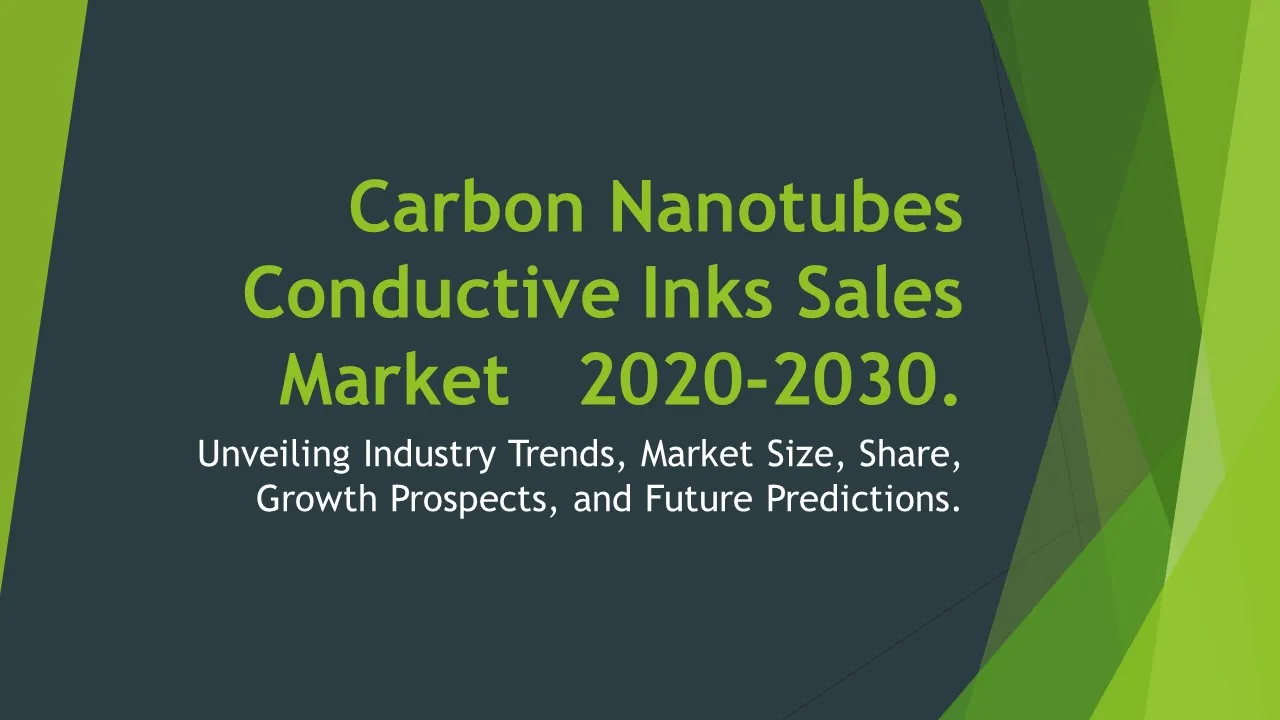Military Aerospace Coatings
Military Aerospace Coatings Market Segments - by Product Type (Epoxy Coatings, Polyurethane Coatings, Ceramic Coatings, Fluoropolymer Coatings, and Acrylic Coatings), Application (Exterior Coatings, Interior Coatings, Engine Coatings, Avionics Coatings, and Landing Gear Coatings), Distribution Channel (OEM, Aftermarket), Substrate Type (Metal Coatings, Composite Coatings, and Plastic Coatings), and Region (North America, Europe, Asia Pacific, Latin America, Middle East & Africa) - Global Industry Analysis, Growth, Share, Size, Trends, and Forecast 2025-2035
- Report Preview
- Table Of Content
- Segments
- Methodology
Military Aerospace Coatings Market Outlook
The global Military Aerospace Coatings Market is projected to reach approximately USD 1.5 billion by 2035, with a compound annual growth rate (CAGR) of around 6% during the forecast period from 2025 to 2035. This growth can be attributed to the increasing demand for advanced military aircraft, coupled with the need for high-performance coatings that enhance durability and resistance to extreme environmental conditions. The escalating military budgets of various nations, especially in North America and Asia Pacific, further drive investments in advanced aerospace technologies, thereby boosting the coatings market. Additionally, the rapid developments in the aerospace sector, including the introduction of new and advanced materials, necessitate efficient and robust coating solutions. This demand is compounded by the need for compliance with stringent environmental regulations, thereby pushing manufacturers towards innovative and sustainable coating solutions.
Growth Factor of the Market
Several factors are contributing to the growth of the Military Aerospace Coatings Market. Firstly, the increasing defense spending by countries worldwide is a significant driver, as nations continue to invest in strengthening their military capabilities, leading to a higher demand for advanced aircraft and consequently, for specialized coatings. Secondly, advancements in coating technologies, such as the development of more efficient and environmentally friendly formulations, have broadened their application scope, making them more appealing to manufacturers. Additionally, the growing focus on reducing maintenance costs and enhancing the longevity of military assets has resulted in an increasing utilization of high-performance coatings. Moreover, the rising need for weight reduction and improved fuel efficiency in military aircraft is further accelerating the demand for lightweight and durable coating solutions. Lastly, the surge in military modernization programs globally also plays a critical role in propelling the market forward.
Key Highlights of the Market
- The global Military Aerospace Coatings Market is anticipated to grow at a CAGR of around 6% from 2025 to 2035.
- North America is expected to dominate the market, accounting for the largest share due to high defense expenditures.
- Epoxy coatings are projected to witness significant demand owing to their excellent adhesion and resistance properties.
- The Aftermarket distribution channel is anticipated to grow rapidly, driven by the need for maintenance and refurbishment of aerospace components.
- Environmental regulations are pushing manufacturers to develop sustainable and eco-friendly coating solutions.
By Product Type
Epoxy Coatings:
Epoxy coatings are widely used in military aerospace applications due to their superior adhesion, chemical resistance, and durability. These coatings provide a robust protective layer on various aircraft surfaces, effectively preventing corrosion and wear caused by environmental factors. The high-performance nature of epoxy coatings makes them suitable for applications where longevity and reliability are paramount. Furthermore, epoxy coatings are available in various formulations, providing options for specific applications, such as exterior surfaces subjected to harsh weather conditions. As the military continues to seek ways to enhance the longevity and performance of their aircraft, the demand for epoxy coatings is expected to remain strong, making them a crucial segment within the Military Aerospace Coatings Market.
Polyurethane Coatings:
Polyurethane coatings are another essential category within the Military Aerospace Coatings Market. Known for their flexibility and impact resistance, these coatings offer excellent protection against abrasions and solvents. Their ability to maintain a high gloss finish while providing UV resistance makes them particularly suitable for exterior applications on military aircraft. Additionally, polyurethane coatings can be formulated to meet specific performance criteria, including varying degrees of hardness and chemical resistance, which makes them versatile for different aerospace components. The increasing demands for lightweight and high-performance materials in military applications are likely to drive the growth of polyurethane coatings in the aerospace sector.
Ceramic Coatings:
Ceramic coatings are gaining traction in the military aerospace sector due to their exceptional thermal stability and abrasion resistance. These coatings provide protection in extreme operating conditions, making them ideal for engine components and other high-temperature applications. The unique properties of ceramic coatings contribute to improved fuel efficiency and reduced wear on critical engine parts, which is essential for maintaining operational readiness in military aviation. As advancements in material science continue to evolve, the application of ceramic coatings is expected to expand further, showcasing their importance in the Military Aerospace Coatings Market.
Fluoropolymer Coatings:
Fluoropolymer coatings are utilized in military aerospace applications primarily for their chemical resistance and low friction properties. These coatings are effective in preventing the accumulation of dirt, ice, and other contaminants on aircraft surfaces, which enhances performance and reduces maintenance efforts. Their unique characteristics make them ideal for avionics coatings and other sensitive components that require protection from environmental factors. The increasing emphasis on maintaining the operational efficiency of military aircraft will likely drive demand for fluoropolymer coatings, especially as defense forces seek to enhance the longevity of their assets.
Acrylic Coatings:
Acrylic coatings are prominent in the Military Aerospace Coatings Market due to their versatility and ease of application. They offer good weather resistance and can be used in a variety of environments, making them suitable for both exterior and interior applications. These coatings are often used for aesthetic purposes as well, providing a protective layer while enhancing the visual appeal of military aircraft. As more military organizations focus on the aesthetics of their fleets alongside performance, the demand for acrylic coatings is expected to increase, contributing to their growth in the market.
By Application
Exterior Coatings:
Exterior coatings are critical in the military aerospace sector as they protect aircraft from environmental degradation, including UV exposure, moisture, and corrosive elements. These coatings enhance the durability and longevity of aircraft surfaces, ensuring they can withstand harsh operating conditions. The increased focus on maintaining the structural integrity of military assets while reducing overall maintenance costs drives the demand for high-quality exterior coatings. As military operations continue to expand globally, the need for reliable and resilient exterior coatings is anticipated to grow, significantly impacting the Military Aerospace Coatings Market.
Interior Coatings:
Interior coatings are essential for ensuring the safety and comfort of military aircraft occupants. These coatings prevent corrosion and wear on critical components within the aircraft, contributing to a safe operational environment. Moreover, interior coatings can reduce noise and improve thermal insulation, enhancing overall passenger comfort during missions. The growing emphasis on maintaining high safety standards and improving onboard experience for military personnel is expected to drive demand for innovative interior coating solutions in the aerospace sector. This trend highlights the importance of interior coatings in the overall Military Aerospace Coatings Market.
Engine Coatings:
Engine coatings play a vital role in the performance and efficiency of military aircraft engines. These specialized coatings are designed to withstand extreme temperatures and pressures, providing necessary protection against wear and corrosion. By enhancing the performance of engine components, these coatings contribute to improved fuel efficiency and reduced maintenance requirements. As military aviation continues to evolve, the need for advanced engine coatings that meet stringent performance standards is likely to increase, driving significant growth in this segment of the Military Aerospace Coatings Market.
Avionics Coatings:
Avionics coatings are integral to protecting sensitive electronic components within military aircraft. These coatings safeguard against environmental factors, ensuring the reliability and functionality of critical systems. With the increasing integration of advanced technologies in military aviation, the demand for specialized avionics coatings is expected to grow as they provide essential protection for complex electronic systems. The evolution of military avionics towards more sophisticated and sensitive equipment necessitates the use of high-performance coatings, further underpinning their importance in the Military Aerospace Coatings Market.
Landing Gear Coatings:
Landing gear coatings are crucial for ensuring the safety and performance of military aircraft during takeoff and landing. These coatings protect against abrasion, corrosion, and fatigue, which can significantly affect the operational readiness of aircraft. The demanding nature of landing gear components, which must withstand high-stress conditions, necessitates the use of durable and reliable coatings. As military operations expand and aircraft utilization increases, the demand for effective landing gear coatings is anticipated to rise, contributing to the growth of this segment in the Military Aerospace Coatings Market.
By Distribution Channel
OEM:
The Original Equipment Manufacturer (OEM) distribution channel plays a significant role in the Military Aerospace Coatings Market. OEMs are responsible for integrating coatings into aircraft during the manufacturing process, ensuring that all components meet stringent quality and performance standards. As military aircraft become more sophisticated, the demand for high-performance coatings from OEMs is expected to increase, driven by the need for advanced protective solutions. Furthermore, OEM partnerships with coating manufacturers are critical in developing innovative formulations that enhance the operational effectiveness of military aircraft. This segment is poised to witness substantial growth as new military projects and aircraft models emerge globally.
Aftermarket:
The aftermarket distribution channel is gaining importance in the Military Aerospace Coatings Market, particularly due to the increasing emphasis on aircraft maintenance and refurbishment. As military aircraft age, the need for effective coatings to protect and restore surfaces becomes paramount. The aftermarket segment encompasses various services, including repainting and touch-ups, which are essential for maintaining the appearance and functionality of military assets. With the growing focus on extending the life cycle of aircraft and reducing overall maintenance costs, the aftermarket for aerospace coatings is expected to experience significant growth in the coming years, highlighting its critical role in the military aerospace sector.
By Substrate Type
Metal Coatings:
Metal coatings are a fundamental segment within the Military Aerospace Coatings Market, providing essential protection to various metal components of military aircraft. These coatings enhance corrosion resistance and wear protection, ensuring the longevity of critical parts exposed to harsh environmental conditions. The need for weight reduction and enhanced fuel efficiency in military aviation further boosts the demand for advanced metal coatings. As aerospace technologies continue to evolve, manufacturers are increasingly adopting innovative metal coating solutions to meet the performance expectations of modern military aircraft, solidifying their importance in the market.
Composite Coatings:
Composite coatings have become increasingly significant in the military aerospace sector due to the growing adoption of composite materials in aircraft design. These coatings provide essential protection against environmental degradation while enhancing the overall performance of composite structures. The lightweight nature of composites, combined with the protective properties of these coatings, allows for improved fuel efficiency and operational effectiveness. As military aircraft design trends continue to shift towards composite materials, the demand for robust and effective composite coatings is expected to rise, making them a crucial segment in the Military Aerospace Coatings Market.
Plastic Coatings:
Plastic coatings are utilized in various applications within military aerospace, particularly for components that require lightweight and flexible protective solutions. These coatings offer good resistance to chemicals and environmental factors, making them suitable for both interior and exterior applications. The advancement of coating technologies has led to the development of specialized plastic coatings that can withstand the rigors of military operations. As the aerospace industry increasingly adopts innovative materials to enhance the performance of military aircraft, the demand for effective plastic coatings is anticipated to grow, emphasizing their role in the Military Aerospace Coatings Market.
By Region
The North American region is anticipated to dominate the Military Aerospace Coatings Market, accounting for over 40% of the global market share by 2035. The United States, being a global leader in military spending and advanced aerospace technology, significantly contributes to the region's growth. The presence of major defense contractors and aerospace manufacturers in this region fosters innovation and the adoption of advanced coating solutions. Furthermore, the increasing focus on enhancing the operational capabilities of existing military fleets drives the demand for high-performance coatings. With a projected CAGR of over 6% during the forecast period, North America is set to maintain its position as the leading market for military aerospace coatings.
In Europe, the Military Aerospace Coatings Market is expected to witness steady growth, supported by increasing defense budgets and modernization programs across several countries. The European defense landscape is evolving, with nations investing in advanced military technologies to enhance their air capabilities. The region's push towards sustainable and environmentally friendly coating solutions is likely to drive innovation in the aerospace coatings sector. Moreover, the increasing collaboration between European countries for joint defense initiatives further propels the demand for high-quality coatings. Although the market share in Europe is projected to be lower than that of North America, it remains a significant contributor to the global Military Aerospace Coatings Market.
Opportunities
The Military Aerospace Coatings Market presents numerous growth opportunities driven by technological advancements and changing industry dynamics. One significant opportunity lies in the development of environmentally friendly coatings that comply with increasingly stringent regulations. As governments and military organizations push for sustainable practices, the demand for eco-friendly coating solutions is expected to rise. Companies that innovate in this space can capture a substantial market share by offering products that not only meet performance expectations but also align with environmental goals. Additionally, investments in research and development to create high-performance coatings that enhance aircraft efficiency and reduce maintenance costs represent a significant opportunity for growth in this sector.
Furthermore, the increasing focus on unmanned aerial vehicles (UAVs) and advanced air mobility solutions creates new avenues for the Military Aerospace Coatings Market. As these technologies continue to gain traction, there will be a rising demand for specialized coatings that can meet the unique requirements of UAVs and other emerging aerospace applications. Manufacturers who can adapt their offerings to cater to these evolving needs will position themselves advantageously in the market. Moreover, the growing trend of defense collaborations and partnerships among nations to enhance military capabilities is likely to provide opportunities for coating manufacturers to expand their reach and influence in different regions.
Threats
The Military Aerospace Coatings Market faces several threats that could impact its growth trajectory. One significant concern is the volatility in raw material prices, which can affect the production costs of coatings. The dependency on specific raw materials, particularly those sourced from limited geographical regions, may lead to supply chain disruptions and increased costs for manufacturers. Additionally, the emergence of alternative technologies and materials could pose a challenge to traditional coating solutions, compelling manufacturers to innovate continuously to remain competitive. Furthermore, geopolitical tensions and changes in defense budgets can impact the military aerospace market, leading to fluctuations in demand for coatings.
Another critical concern for the Military Aerospace Coatings Market is the potential for stringent regulations regarding chemical compositions and environmental impacts. As governments around the world become increasingly aware of environmental sustainability, they may impose stricter regulations on the use of certain chemicals in coatings. Compliance with these regulations may require significant investment in research and development, impacting overall profitability. Additionally, the need for constant innovation to meet performance standards and regulatory requirements can strain the resources of coating manufacturers, posing a potential threat to their operational viability.
Competitor Outlook
- PPG Industries
- AkzoNobel
- Hempel A/S
- Sherwin-Williams
- Axalta Coating Systems
- Henkel AG & Co. KGaA
- BASF SE
- Kansai Paint Co., Ltd.
- 3M Company
- Eastman Chemical Company
- Diamond Vogel
- Jotun A/S
- Valspar Corporation
- Masco Corporation
- Chugoku Marine Paints, Ltd.
The competitive landscape of the Military Aerospace Coatings Market is characterized by a diverse array of players, each striving to innovate and capture a significant share of this expanding market. Major companies in the sector are actively involved in research and development to create advanced coating solutions that meet the demanding requirements of military applications. Collaborations and partnerships among manufacturers, suppliers, and military organizations are becoming increasingly common as companies seek to leverage collective expertise to enhance product offerings. This trend is indicative of a market that is not only competitive but also focused on innovation and technological advancement.
Companies like PPG Industries and AkzoNobel are at the forefront of the Military Aerospace Coatings Market, leveraging their extensive experience and technological capabilities to develop high-performance coatings tailored for military applications. PPG Industries, renowned for its innovative solutions, offers a broad range of coatings designed to improve the durability and efficiency of military aircraft. AkzoNobel, with its strong emphasis on sustainability, is also making significant strides in developing eco-friendly coatings that comply with environmental regulations, positioning itself as a leader in the market. Both companies are well-positioned to capitalize on the growing demand for advanced aerospace coatings as military operations continue to expand.
Furthermore, companies like Sherwin-Williams and Axalta Coating Systems are also making notable contributions to the Military Aerospace Coatings Market. Sherwin-Williams, with its vast portfolio of coatings, is focusing on enhancing the performance characteristics of its products to meet the specific needs of military applications. Meanwhile, Axalta is recognized for its innovative coating solutions that offer superior protection and efficiency for military aircraft. As these companies strive to differentiate themselves through product quality and performance, they are likely to influence the overall dynamics of the Military Aerospace Coatings Market significantly.
1 Appendix
- 1.1 List of Tables
- 1.2 List of Figures
2 Introduction
- 2.1 Market Definition
- 2.2 Scope of the Report
- 2.3 Study Assumptions
- 2.4 Base Currency & Forecast Periods
3 Market Dynamics
- 3.1 Market Growth Factors
- 3.2 Economic & Global Events
- 3.3 Innovation Trends
- 3.4 Supply Chain Analysis
4 Consumer Behavior
- 4.1 Market Trends
- 4.2 Pricing Analysis
- 4.3 Buyer Insights
5 Key Player Profiles
- 5.1 BASF SE
- 5.1.1 Business Overview
- 5.1.2 Products & Services
- 5.1.3 Financials
- 5.1.4 Recent Developments
- 5.1.5 SWOT Analysis
- 5.2 AkzoNobel
- 5.2.1 Business Overview
- 5.2.2 Products & Services
- 5.2.3 Financials
- 5.2.4 Recent Developments
- 5.2.5 SWOT Analysis
- 5.3 Jotun A/S
- 5.3.1 Business Overview
- 5.3.2 Products & Services
- 5.3.3 Financials
- 5.3.4 Recent Developments
- 5.3.5 SWOT Analysis
- 5.4 3M Company
- 5.4.1 Business Overview
- 5.4.2 Products & Services
- 5.4.3 Financials
- 5.4.4 Recent Developments
- 5.4.5 SWOT Analysis
- 5.5 Hempel A/S
- 5.5.1 Business Overview
- 5.5.2 Products & Services
- 5.5.3 Financials
- 5.5.4 Recent Developments
- 5.5.5 SWOT Analysis
- 5.6 Diamond Vogel
- 5.6.1 Business Overview
- 5.6.2 Products & Services
- 5.6.3 Financials
- 5.6.4 Recent Developments
- 5.6.5 SWOT Analysis
- 5.7 PPG Industries
- 5.7.1 Business Overview
- 5.7.2 Products & Services
- 5.7.3 Financials
- 5.7.4 Recent Developments
- 5.7.5 SWOT Analysis
- 5.8 Sherwin-Williams
- 5.8.1 Business Overview
- 5.8.2 Products & Services
- 5.8.3 Financials
- 5.8.4 Recent Developments
- 5.8.5 SWOT Analysis
- 5.9 Masco Corporation
- 5.9.1 Business Overview
- 5.9.2 Products & Services
- 5.9.3 Financials
- 5.9.4 Recent Developments
- 5.9.5 SWOT Analysis
- 5.10 Valspar Corporation
- 5.10.1 Business Overview
- 5.10.2 Products & Services
- 5.10.3 Financials
- 5.10.4 Recent Developments
- 5.10.5 SWOT Analysis
- 5.11 Henkel AG & Co. KGaA
- 5.11.1 Business Overview
- 5.11.2 Products & Services
- 5.11.3 Financials
- 5.11.4 Recent Developments
- 5.11.5 SWOT Analysis
- 5.12 Axalta Coating Systems
- 5.12.1 Business Overview
- 5.12.2 Products & Services
- 5.12.3 Financials
- 5.12.4 Recent Developments
- 5.12.5 SWOT Analysis
- 5.13 Kansai Paint Co., Ltd.
- 5.13.1 Business Overview
- 5.13.2 Products & Services
- 5.13.3 Financials
- 5.13.4 Recent Developments
- 5.13.5 SWOT Analysis
- 5.14 Eastman Chemical Company
- 5.14.1 Business Overview
- 5.14.2 Products & Services
- 5.14.3 Financials
- 5.14.4 Recent Developments
- 5.14.5 SWOT Analysis
- 5.15 Chugoku Marine Paints, Ltd.
- 5.15.1 Business Overview
- 5.15.2 Products & Services
- 5.15.3 Financials
- 5.15.4 Recent Developments
- 5.15.5 SWOT Analysis
- 5.1 BASF SE
6 Market Segmentation
- 6.1 Military Aerospace Coatings Market, By Application
- 6.1.1 Exterior Coatings
- 6.1.2 Interior Coatings
- 6.1.3 Engine Coatings
- 6.1.4 Avionics Coatings
- 6.1.5 Landing Gear Coatings
- 6.2 Military Aerospace Coatings Market, By Product Type
- 6.2.1 Epoxy Coatings
- 6.2.2 Polyurethane Coatings
- 6.2.3 Ceramic Coatings
- 6.2.4 Fluoropolymer Coatings
- 6.2.5 Acrylic Coatings
- 6.3 Military Aerospace Coatings Market, By Substrate Type
- 6.3.1 Metal Coatings
- 6.3.2 Composite Coatings
- 6.3.3 Plastic Coatings
- 6.1 Military Aerospace Coatings Market, By Application
7 Competitive Analysis
- 7.1 Key Player Comparison
- 7.2 Market Share Analysis
- 7.3 Investment Trends
- 7.4 SWOT Analysis
8 Research Methodology
- 8.1 Analysis Design
- 8.2 Research Phases
- 8.3 Study Timeline
9 Future Market Outlook
- 9.1 Growth Forecast
- 9.2 Market Evolution
10 Geographical Overview
- 10.1 Europe - Market Analysis
- 10.1.1 By Country
- 10.1.1.1 UK
- 10.1.1.2 France
- 10.1.1.3 Germany
- 10.1.1.4 Spain
- 10.1.1.5 Italy
- 10.1.1 By Country
- 10.2 Asia Pacific - Market Analysis
- 10.2.1 By Country
- 10.2.1.1 India
- 10.2.1.2 China
- 10.2.1.3 Japan
- 10.2.1.4 South Korea
- 10.2.1 By Country
- 10.3 Latin America - Market Analysis
- 10.3.1 By Country
- 10.3.1.1 Brazil
- 10.3.1.2 Argentina
- 10.3.1.3 Mexico
- 10.3.1 By Country
- 10.4 North America - Market Analysis
- 10.4.1 By Country
- 10.4.1.1 USA
- 10.4.1.2 Canada
- 10.4.1 By Country
- 10.5 Middle East & Africa - Market Analysis
- 10.5.1 By Country
- 10.5.1.1 Middle East
- 10.5.1.2 Africa
- 10.5.1 By Country
- 10.6 Military Aerospace Coatings Market by Region
- 10.1 Europe - Market Analysis
11 Global Economic Factors
- 11.1 Inflation Impact
- 11.2 Trade Policies
12 Technology & Innovation
- 12.1 Emerging Technologies
- 12.2 AI & Digital Trends
- 12.3 Patent Research
13 Investment & Market Growth
- 13.1 Funding Trends
- 13.2 Future Market Projections
14 Market Overview & Key Insights
- 14.1 Executive Summary
- 14.2 Key Trends
- 14.3 Market Challenges
- 14.4 Regulatory Landscape
Segments Analyzed in the Report
The global Military Aerospace Coatings market is categorized based on
By Product Type
- Epoxy Coatings
- Polyurethane Coatings
- Ceramic Coatings
- Fluoropolymer Coatings
- Acrylic Coatings
By Application
- Exterior Coatings
- Interior Coatings
- Engine Coatings
- Avionics Coatings
- Landing Gear Coatings
By Substrate Type
- Metal Coatings
- Composite Coatings
- Plastic Coatings
By Region
- North America
- Europe
- Asia Pacific
- Latin America
- Middle East & Africa
Key Players
- PPG Industries
- AkzoNobel
- Hempel A/S
- Sherwin-Williams
- Axalta Coating Systems
- Henkel AG & Co. KGaA
- BASF SE
- Kansai Paint Co., Ltd.
- 3M Company
- Eastman Chemical Company
- Diamond Vogel
- Jotun A/S
- Valspar Corporation
- Masco Corporation
- Chugoku Marine Paints, Ltd.
- Publish Date : Jan 21 ,2025
- Report ID : CH-21608
- No. Of Pages : 100
- Format : |
- Ratings : 4.5 (110 Reviews)
Related reports









